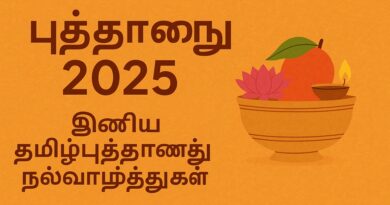
Are Baisakhi and Lohri the Same?
Introduction
Punjab, a culturally rich and vibrant state in northern India, is known for its lively festivals, colorful traditions, and deep-rooted agricultural lifestyle. Among the many festivals celebrated in this region, Baisakhi and Lohri stand out due to their widespread popularity and significance in both cultural and religious contexts.
A common question that often arises among those unfamiliar with Punjabi traditions is:
“Are Baisakhi and Lohri the same?”
While both festivals are celebrated with enthusiasm, music, and dancing, they are not the same. They differ in timing, religious significance, customs, and symbolism.
In this article, we’ll explore the differences and similarities between Baisakhi and Lohri, examining their origins, significance, celebrations, and impact on the communities that observe them.
Overview of Baisakhi
📅 When is Baisakhi Celebrated?
Baisakhi (also spelled Vaisakhi) is celebrated on April 13 or April 14 every year, depending on the solar calendar. In 2025, Baisakhi will fall on Monday, April 14.
🌾 What Does Baisakhi Celebrate?
- Harvest Festival:
Baisakhi marks the harvest of the Rabi crops, especially wheat. It is an important event for farmers, signifying prosperity and hard work. - Sikh New Year:
For the Sikh community, Baisakhi holds religious importance as it marks the formation of the Khalsa Panth by Guru Gobind Singh Ji in 1699. - Cultural Significance:
In Punjab and other North Indian states, Baisakhi is also a New Year celebration, marked by fairs, processions, music, and dance.
🛕 Religious Observances on Baisakhi
- Sikhs visit Gurudwaras, especially the Golden Temple in Amritsar.
- Special Akhand Path (uninterrupted reading of Guru Granth Sahib).
- Nagar Kirtans (religious processions with singing and martial arts displays).
- Amrit Sanchar (Sikh initiation ceremony) often takes place.
Overview of Lohri
📅 When is Lohri Celebrated?
Lohri is celebrated on January 13 every year, a day before Makar Sankranti.
🔥 What Does Lohri Celebrate?
- End of Winter Solstice:
Lohri marks the passing of the winter solstice and the beginning of longer days. - Agricultural Importance:
It celebrates the harvesting of sugarcane and the preparation of fields for the next crop. Traditionally, it was a celebration of the sowing of Rabi crops. - Fertility and Family:
Lohri is also associated with fertility, prosperity, and is especially celebrated for newborns and newlyweds in the family.
🪵 Rituals and Festivities of Lohri
- Families gather around a bonfire in the evening.
- People offer rewari, peanuts, sesame seeds, and popcorn into the fire.
- Bhangra and Gidda dances are performed.
- Traditional songs like “Sunder Mundriye” are sung.
- It’s a time for community bonding and celebration.
Key Differences Between Baisakhi and Lohri
| Aspect | Baisakhi | Lohri |
|---|---|---|
| Date | April 13/14 | January 13 |
| Type of Festival | Harvest + Religious (Sikh New Year) | Cultural + Seasonal (Winter end celebration) |
| Religious Significance | Commemorates formation of Khalsa Panth | No direct religious link, more cultural |
| Main Activities | Nagar Kirtans, Gurdwara visits, fairs | Bonfire, folk songs, Bhangra around the fire |
| Associated Crops | Wheat (Rabi harvest) | Sugarcane, sesame (Rabi sowing season) |
| Weather Context | Spring season | Peak of winter |
| Location of Major Celebrations | Amritsar, Anandpur Sahib, rural Punjab | Rural and urban Punjab, Haryana, Delhi |
Similarities Between Baisakhi and Lohri
Despite being different festivals, Baisakhi and Lohri share several common cultural elements:
- Both are celebrated primarily in Punjab and northern India.
- They involve music, dance (especially Bhangra and Gidda), and traditional Punjabi cuisine.
- Each marks a transition in seasons and is tied to the agricultural calendar.
- They are times of joy, social bonding, and community feasting.
- Both festivals include folk traditions, and are important for Punjabi identity.
Misconception: Why Are Baisakhi and Lohri Confused?
The confusion may arise due to the following reasons:
- Agricultural Basis: Both are harvest-related festivals.
- Punjabi Origin: Both are widely celebrated in Punjabi culture.
- Colorful Celebrations: Both involve loud music, dance, and social festivities.
- Non-Punjabis’ Perspective: Those unfamiliar with regional differences might lump them together.
Explore
- Vaishakhi 2025: The Festival of Harvest, Prosperity, and New Beginnings
- Vaishakhi 2025 Wishes, Messages, and Greetings
- Lohri 2025: Date, History, Significance, Celebrations, and Rituals
- Celebrating Lohri 2025 Wishes in Punjabi, Hindi & English
Conclusion
In summary, Baisakhi and Lohri are not the same, though they share several cultural similarities. While Lohri is a seasonal and cultural festival marking the end of winter and new beginnings, Baisakhi is a religious and agricultural festival that not only celebrates the harvest of wheat but also commemorates a key moment in Sikh religious history.
Understanding the unique identity of each festival helps us appreciate the diversity and richness of Indian traditions. Whether around a bonfire in January or amid golden fields in April, both festivals showcase the spirit of Punjab—full of joy, music, and community.






